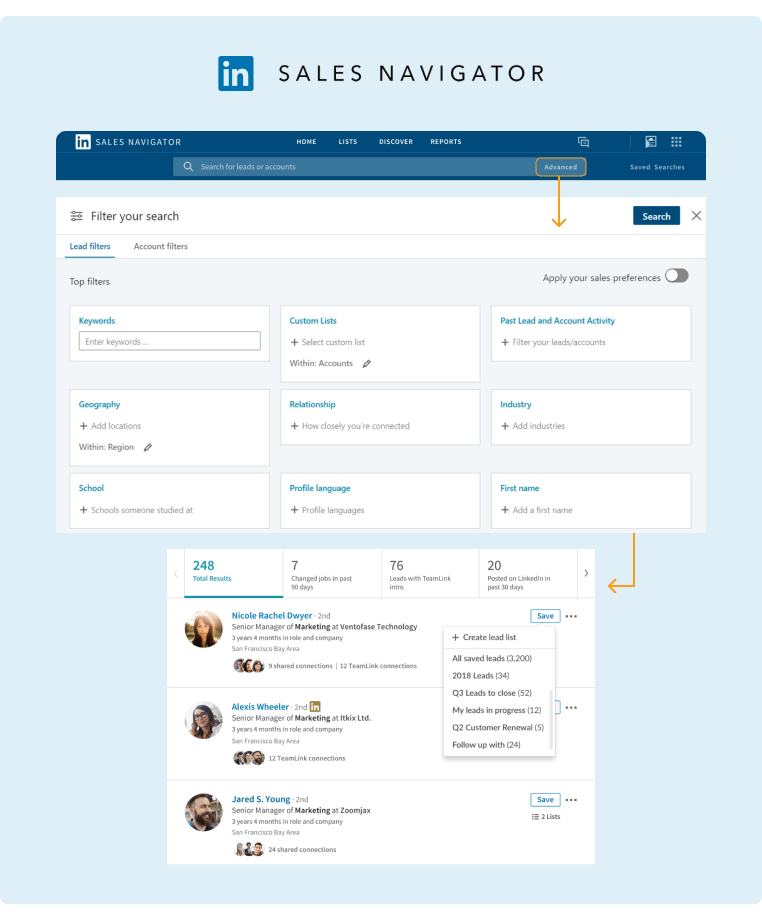How To Maximize Your Social Media Strategy
The role of social media marketing in B2B industries continues to grow. As more B2B brands recognize the importance of social media as part of a robust marketing strategy, they’re using social media platforms to build brand awareness, increase engagement, generate leads, and boost sales.
So, why do some brands gain traction on social media while others spin their wheels? They have a social media strategy.
By implementing a social media marketing strategy, these brands are using social media platforms with intent. They are providing their sales and marketing teams with guided content and engagement to provide better customer service and build trust, which ultimately translates into more sales and loyal customers.
In this article, we’ll show you how to maximize your marketing social media strategy. We’ll discuss key social channels teams can use, social media strategy B2B content, and the benefits of a social media employee advocacy program.
Your Key Social Channels
Part of a strong B2B social media strategy is choosing relevant social channels that your sales and marketing teams can utilize to target ideal clients.
The key social channels for your marketing and social media strategy may vary depending on your company, the audience you hope to reach, and the goals you’d like to achieve. Common social media channels include LinkedIn, Facebook, and X (formerly Twitter). Let’s review the benefits of targeting potential clients on these social channels.
B2B Marketing LinkedIn
B2B marketing on LinkedIn is a great way to generate high-quality leads. In fact, LinkedIn’s lead conversion rates are 3x higher than other ad platforms.
LinkedIn allows you to really narrow down and refine your targeting to capture those key decision-makers. You can use LinkedIn filters to search by job title, location, industry, company size, etc.
In addition to being an excellent platform for organic lead generation, the platform also offers paid methods such as LinkedIn Paid Ads, LinkedIn Messaging, LinkedIn Sales Navigator, and LinkedIn Lead Generation Forms to generate leads. Choose the paid method that best fits your budget and lead generation needs.

B2B Marketing X (Twitter)
B2B Twitter marketing has undergone some changes since its ownership and name changed. Now known as X, advertisers who use the platform have experienced some transitional hiccups.
However, for B2B brands, it’s still worth utilizing X as a social platform for building brand awareness and boosting lead generation. By helping your key executives build a loyal following there, you can then leverage their profiles to boost your sales and marketing initiatives.
B2B Marketing Facebook
Facebook is more than just an ideal social platform for B2C marketing. It’s also an excellent platform for B2B marketing. The platform offers many ways for B2B brands to target an audience including publishing content, creating groups, and hosting events. Facebook Ads, in particular, offers B2B marketers many advanced targeting options including custom audiences as well as lead generation, remarketing, and dynamic ads.

Incorporating a B2B Facebook marketing strategy into your social media strategy will give you an even bigger competitive edge.
Now that we’ve reviewed which social channels your brand should utilize, it’s time to dive into creating a social media content strategy.
Social Media Content Strategy
Remember our spinning wheels analogy? Well, content is what greases the proverbial marketing wheel. Sure, you can have a social media profile on every popular platform. But, if you aren’t producing quality content and sharing it, your wheels will continue to spin as your potential clients leave you in the dust.
Fortunately, here’s where a social media content strategy can help. A social media content strategy acts as the bridge between B2B content and social media marketing, providing a streamlined plan for creating and distributing content to your audience.
B2B Content Marketing Strategy Best Practices
If you aren’t quite sure how best to utilize content to reach and provide value to your B2B audience, look no further. Simply follow these B2B content marketing best practices:
- Research Your B2B Audience. Define your ideal client, creating a persona that describes who you will be targeting. This will later help you develop personalized content that will educate and delight your audience.
- Set Goals. Decide what goals are important to you (e.g., growing followers, increasing sales, boosting brand awareness).
- Select Content Types. Choose the types of content that will resonate with your audience. For example, popular forms of content are videos, polls, image posts, etc. Don’t forget to take into consideration the social platform the content will appear on, modifying content as needed.
- Make a Content Calendar. Plan out when to share your content, breaking it down by week, month, quarter, and year. Scheduling your posts in advance will also help with the writing process, better preparing you for upcoming events and initiatives that will need content written. However, err on the side of caution and don’t schedule too far in advance. Content that is scheduled more than three to six months out (and forgotten about until it runs) may contain old, incorrect data by the time it runs.
- Create a Content Marketing Workflow. Determine what role your sales and marketing teams will fill. For example, who will create, edit, and post content? Who is responsible for responding to comments?
- Measure Engagement and Growth. Review impressions, clicks, views, follower count growth, and leads captured. These key performance indicators (KPIs) will help you modify your marketing efforts as needed.
Content Marketing B2B Ideas
To fuel engagement, here are a few of our favorite content marketing B2B ideas:
- Newsletters.
- Live Events.
- Freebies and Contests.
- Product Launches.
- Thought Leadership.
- Actionable Tips.
- Polls.
- Company News.
- Meet-the-Team.
- Behind-the-Scenes/Takeovers.
- FAQs.

Source: LinkedIn
While we prefer to primarily use these ideas on LinkedIn, some of these universal ideas (e.g., polls, live events) will work on Facebook and X, too. Choose the ones that make sense for your brand’s audience and incorporate them into your content strategy for social media.
Social Media Employee Advocacy Program
Another crucial part of your social media strategy for B2B is employee advocacy. Employee advocacy is a marketing strategy where employees become brand ambassadors and share brand messages and content with their professional networks on social media.
Let’s take a look at some of the benefits.
Benefits of Employee Advocacy
Implementing a social media employee advocacy program can help amplify your content distribution. When your employees share content, it broadens your audience reach because they’re tapping into their social networks.
That’s not the only benefit of employee advocacy on social media. It also cultivates high-quality brand awareness, generates new leads, improves customer retention, and attracts top talent. Not to mention it’s also a much more cost-effective method in comparison to digital ads.
So, how do you get employee buy-in for your employee advocacy program? Implement some employee engagement initiatives.
Employee Engagement Initiatives
To motivate your employees, here are some employee engagement initiatives to help you get started:
- Good Company Culture.
- Learning, Development, and Continuing Education Opportunities.
- Employee Health and Wellness Benefits.
- Flexible Work Environments.
- Diversity and Inclusion Programs.
- Transparent Work Environment.
- Recognition and Reward Programs.
- Employee Advocacy Program.
If you choose just one employee engagement initiative to get started, we highly recommend first establishing an employee advocacy program. In fact, an employee advocacy program can help check off several of the other initiatives listed here and nicely tie into your content and social media marketing strategies.
Employee Advocacy Platform
An employee advocacy tool like GaggleAMP can help streamline the process of getting your sales and marketing teams active on social media. Our platform makes it easy to share content and engage with posts on employees’ personal social media accounts.
Here’s how GaggleAMP works:
Step 1: Social Media Managers Select an Engagement Activity
GaggleAMP’s engagement activities are divided by social platform (Facebook, LinkedIn, X, etc.) and specific engagement request (like, comment, share, etc.).

Once you select the engagement activity, the next step is to add specific instructions like pre-written text or a link to a post that you want them to engage with.

Step 2: Employees Complete the Engagement Activity
After you assign an engagement activity, the employee will receive a notification via the platform you’ve selected (e.g., Slack, Microsoft Teams, email, etc.)
Next, employees can click into their personal Gaggle and see their personalized engagement activities with specific instructions.

Step 3: Reward Engaged Employees
To keep employees engaged, GaggleAMP offers a public leaderboard that ranks employees by engagement. Managers assign points for each engagement activity, then when employees complete an activity, they receive points.
Our gamification recognizes and rewards employees for their hard work.
Step 4: Measure Social Media Campaign Results
Our platform makes it easy for you to measure the ROI of your social media efforts. You can track key metrics such as total clicks, reach, etc. You can also break down analytics by social media channel, making it easy to see where your marketing efforts are resonating.
Elevate Your Social Media Strategy With GaggleAMP
GaggleAMP can streamline your content and social media marketing efforts while boosting your employee advocacy program. Plus you’ll get access to in-depth analytics and dashboards to measure and modify your strategy for optimal results.
Ready to elevate your social media strategy? Schedule a demo today.










